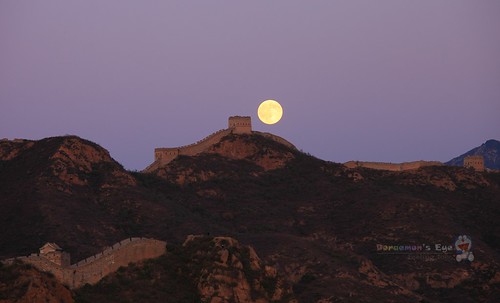The Great Wall of China
(simplified Chinese: 长城; traditional Chinese: 長城; pinyin: Chángchéng; literally "long city/fortress") or (simplified Chinese: 万里长城; traditional Chinese: 萬里長城; pinyin: Wànlǐ Chángchéng;
literally "The long wall of 10,000 Li (里)") is a series of stone and earthen fortifications in northern China, built, rebuilt, and maintained between the 5th century BC and the 16th century to protect the northern borders of the Chinese Empire from Xiongnu attacks during various successive dynasties. Since the 5th century BC, several walls have been built that were referred to as the Great Wall.
One of the most famous is the wall built between 220–206 BC by the first Emperor of China, Qin Shi Huang. Little of that wall remains; the majority of the existing wall were built during the Ming Dynasty.
The Great Wall stretches from Shanhaiguan in the east to Lop Nur in the west, along an arc that roughly delineates the southern edge of Inner Mongolia.
The most comprehensive archaeological survey, using advanced technologies, has recently concluded that the entire Great Wall, with all of its branches, stretches for 8,851.8 km (5,500.3 mi). This is made up of 6,259.6 km (3,889.5 mi) of sections of actual wall, 359.7 km (223.5 mi) of trenches and 2,232.5 km (1,387.2 mi) of natural defensive barriers such as hills and rivers.
"A journey of a thousand miles must begin with a single step." -- Lao Tzu
Copyright © Demetrios the Traveler


No comments:
Post a Comment